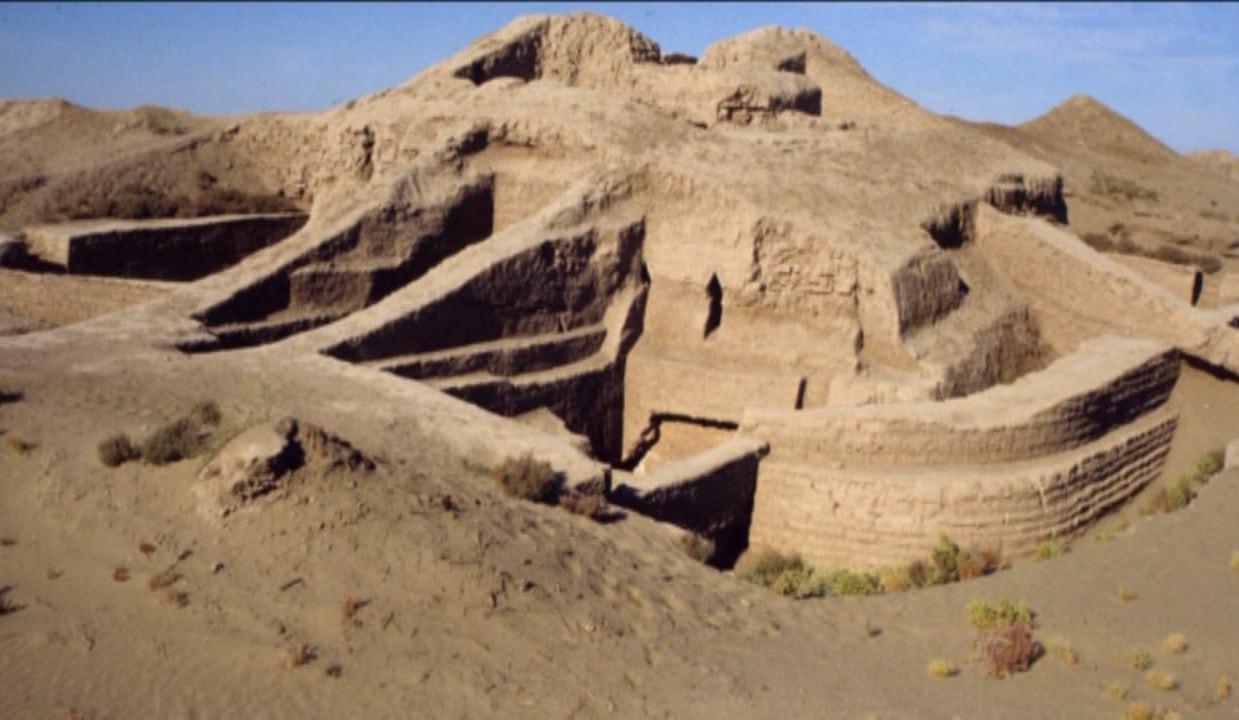 In 1956, the Khorezm archaeological and ethnographic expedition discovered the Akshakhan-kala (Kazakly-yatkan) settlement, located in the Beruni district of Karakalpakstan. This largest archaeological site on the right bank of the Amu Darya occupies more than 40 hectares. Once it was a flourishing oasis of the ancient Khorezmian kingdom with a centralized system of artificial irrigation.
In 1956, the Khorezm archaeological and ethnographic expedition discovered the Akshakhan-kala (Kazakly-yatkan) settlement, located in the Beruni district of Karakalpakstan. This largest archaeological site on the right bank of the Amu Darya occupies more than 40 hectares. Once it was a flourishing oasis of the ancient Khorezmian kingdom with a centralized system of artificial irrigation.
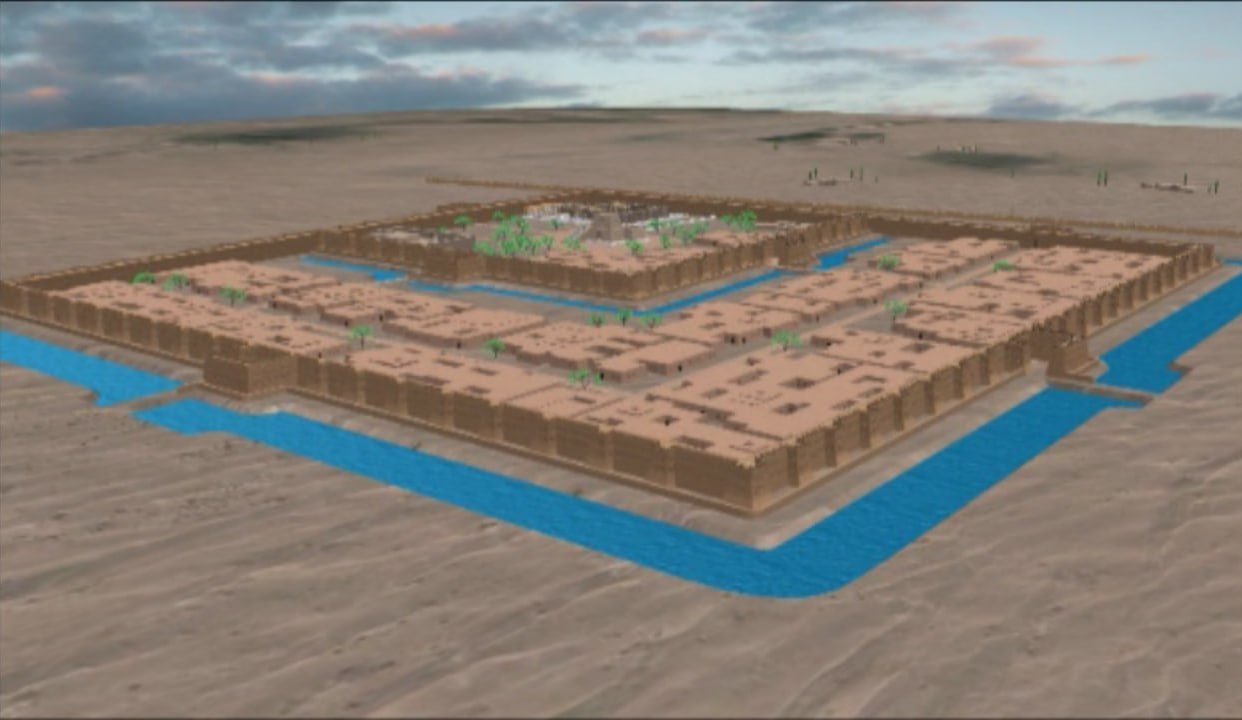 Research of Akshakhan-kala began in 1995 by a joint archaeological expedition of the Karakalpak Scientific Research Institute of Humanities of the Academy of Sciences of Uzbekistan and the University of Sydney (Australia). The expedition was led by Professor Vadim Nikolaevich Yagodin and Professor Alison Betts. Researchers have suggested that it was the Akshakhan-Kala settlement that became the capital of ancient Khorezm after the state emerged from the Achaemenid Empire in the first half of the 6th century BC.
Research of Akshakhan-kala began in 1995 by a joint archaeological expedition of the Karakalpak Scientific Research Institute of Humanities of the Academy of Sciences of Uzbekistan and the University of Sydney (Australia). The expedition was led by Professor Vadim Nikolaevich Yagodin and Professor Alison Betts. Researchers have suggested that it was the Akshakhan-Kala settlement that became the capital of ancient Khorezm after the state emerged from the Achaemenid Empire in the first half of the 6th century BC.
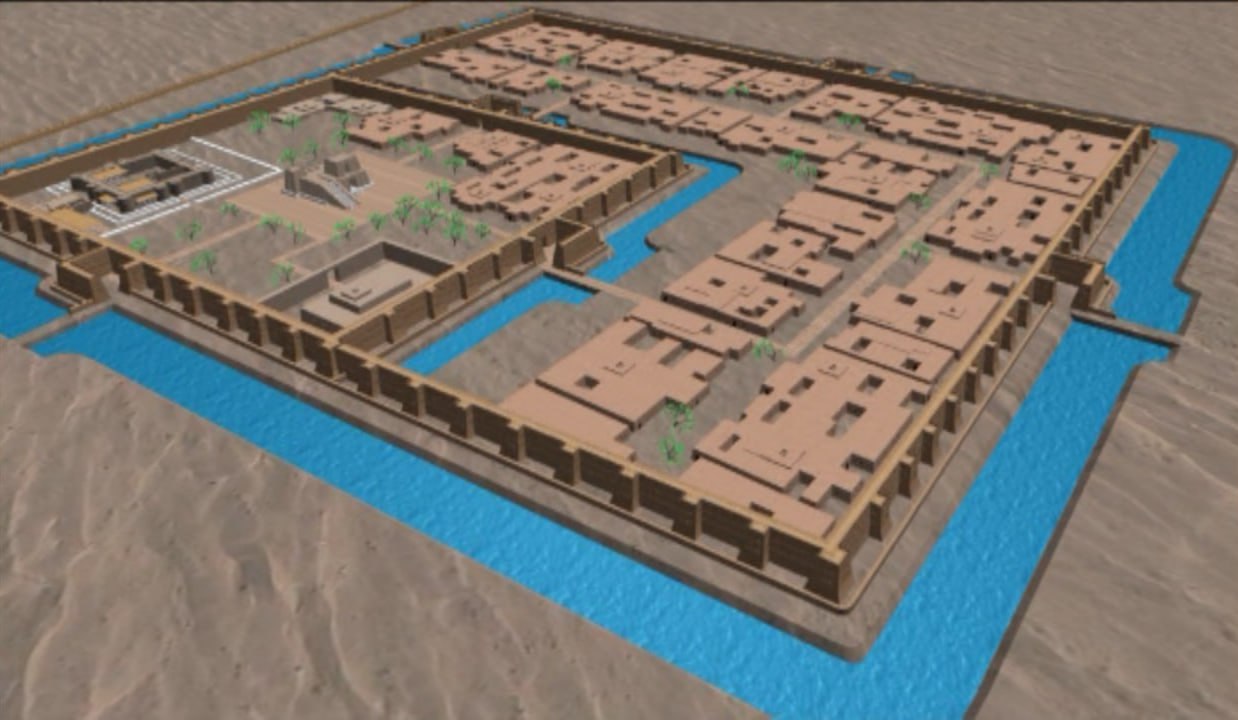 The Akshakhan-Kala settlement is divided into two parts: the lower city and the upper city (or “sacred city”), which occupied at least a quarter of the total area. The settlement had a powerful fortification system. The width of the defensive ditch was 35 meters.
The Akshakhan-Kala settlement is divided into two parts: the lower city and the upper city (or “sacred city”), which occupied at least a quarter of the total area. The settlement had a powerful fortification system. The width of the defensive ditch was 35 meters.
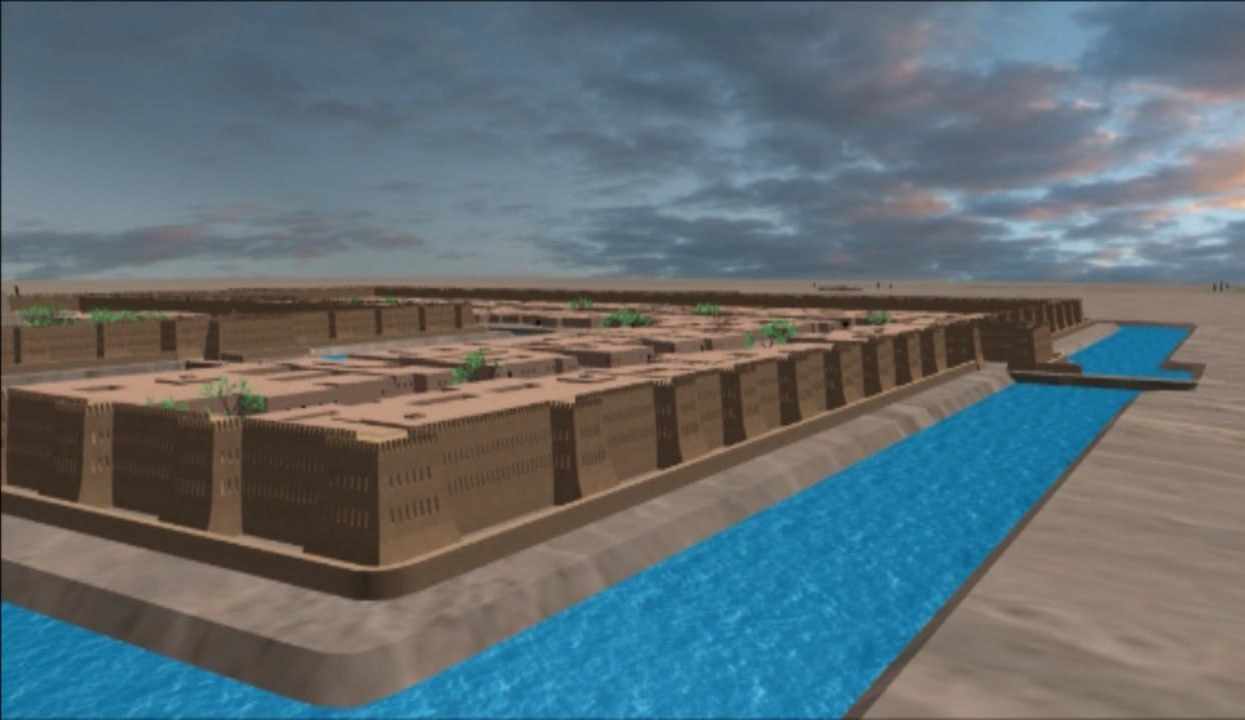 The city wall had a protechism - a wall that was erected parallel to the main defensive structure. Thus, the so-called "death corridor" was formed between the two walls. Enemies, caught in it, became an easy target for the defenders of the city. The city wall was divided into three levels and equipped with two rows of loopholes, arranged in a checkerboard pattern. Entrance to the city was through the so-called labyrinth, getting into which the enemy found himself in a trap and was subjected to all-round fire from the loopholes.
The city wall had a protechism - a wall that was erected parallel to the main defensive structure. Thus, the so-called "death corridor" was formed between the two walls. Enemies, caught in it, became an easy target for the defenders of the city. The city wall was divided into three levels and equipped with two rows of loopholes, arranged in a checkerboard pattern. Entrance to the city was through the so-called labyrinth, getting into which the enemy found himself in a trap and was subjected to all-round fire from the loopholes.
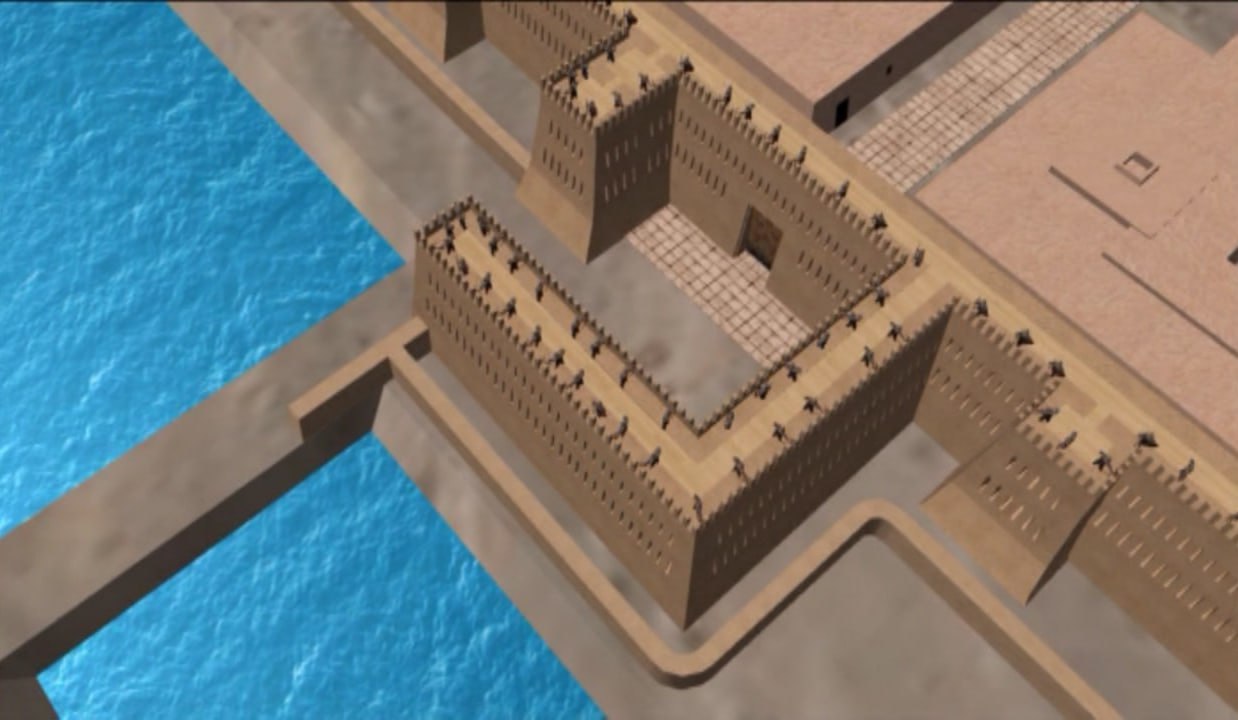
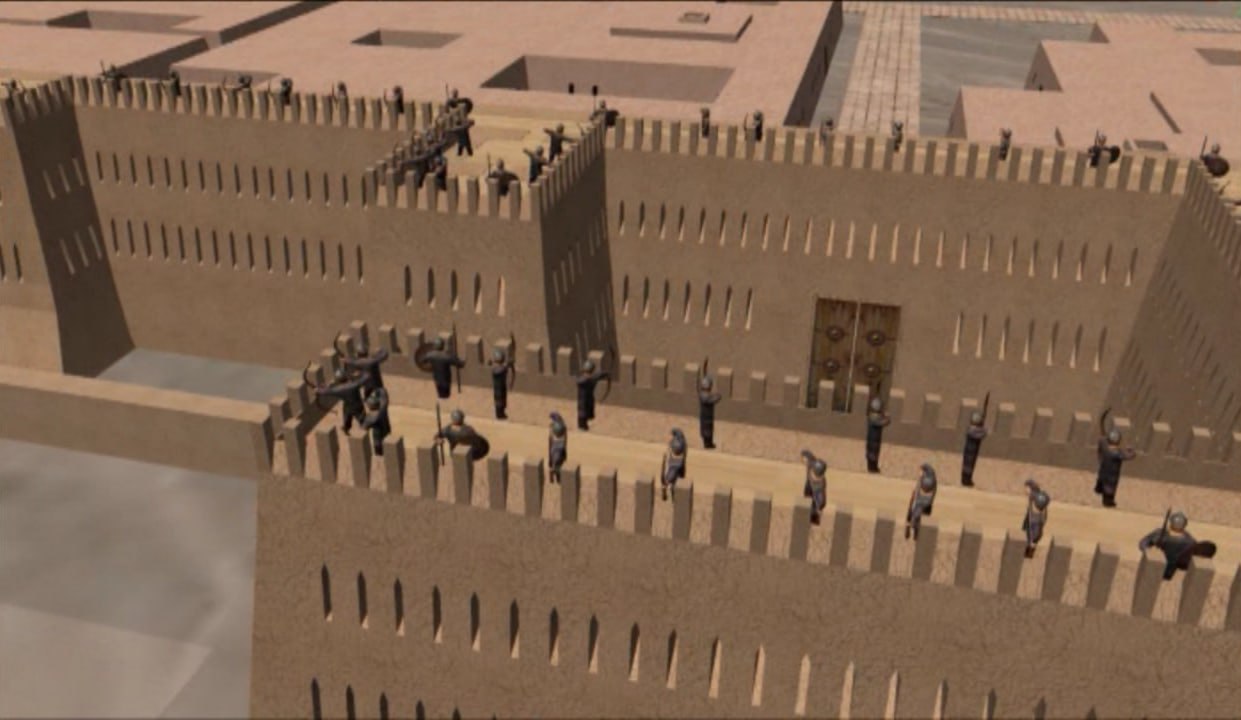 Inside the citadel, there were residential and working quarters. The presence of sewage systems and drainage indicates a high level of development of the people who lived there. The city was the center of power, as evidenced by the brick paving of the streets. Bricks were delivered from various regions, and each region left its own sign (tamga) on them.
Inside the citadel, there were residential and working quarters. The presence of sewage systems and drainage indicates a high level of development of the people who lived there. The city was the center of power, as evidenced by the brick paving of the streets. Bricks were delivered from various regions, and each region left its own sign (tamga) on them.
Archaeological research has shown that there was a mausoleum, a cult and ceremonial complex and several objects of unknown purpose on the territory of the settlement. The mausoleum was located in the center of the sacred city, where, according to the to researchers' conjectures, the founder of the Siyavushid dynasty was buried.
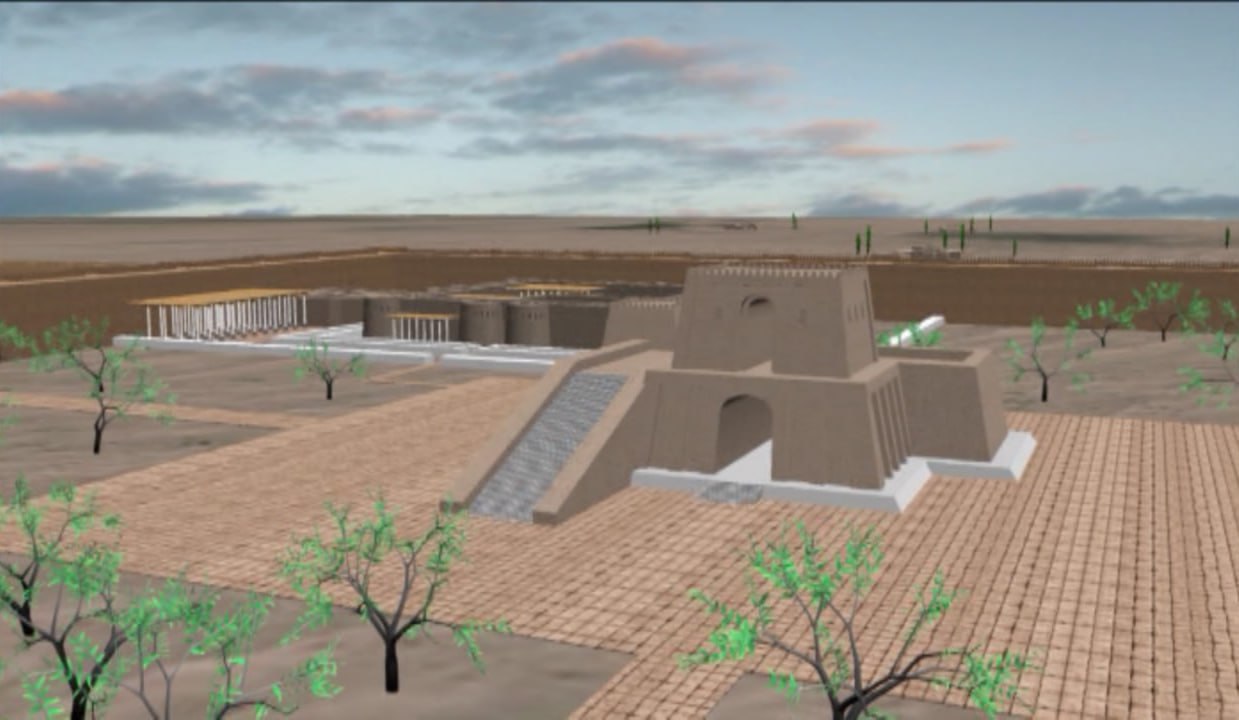 One of the components of the cult and ceremonial complex is a building measuring 60 x 60 m with corridors inside the walls. It is surrounded by three rows of walls, with a total length of about 1 km. The outer sides of the walls are plastered with alabaster. On the eastern wall of the corridor, an image of a procession of five different-colored horses led by a person has been discovered found.
One of the components of the cult and ceremonial complex is a building measuring 60 x 60 m with corridors inside the walls. It is surrounded by three rows of walls, with a total length of about 1 km. The outer sides of the walls are plastered with alabaster. On the eastern wall of the corridor, an image of a procession of five different-colored horses led by a person has been discovered found.
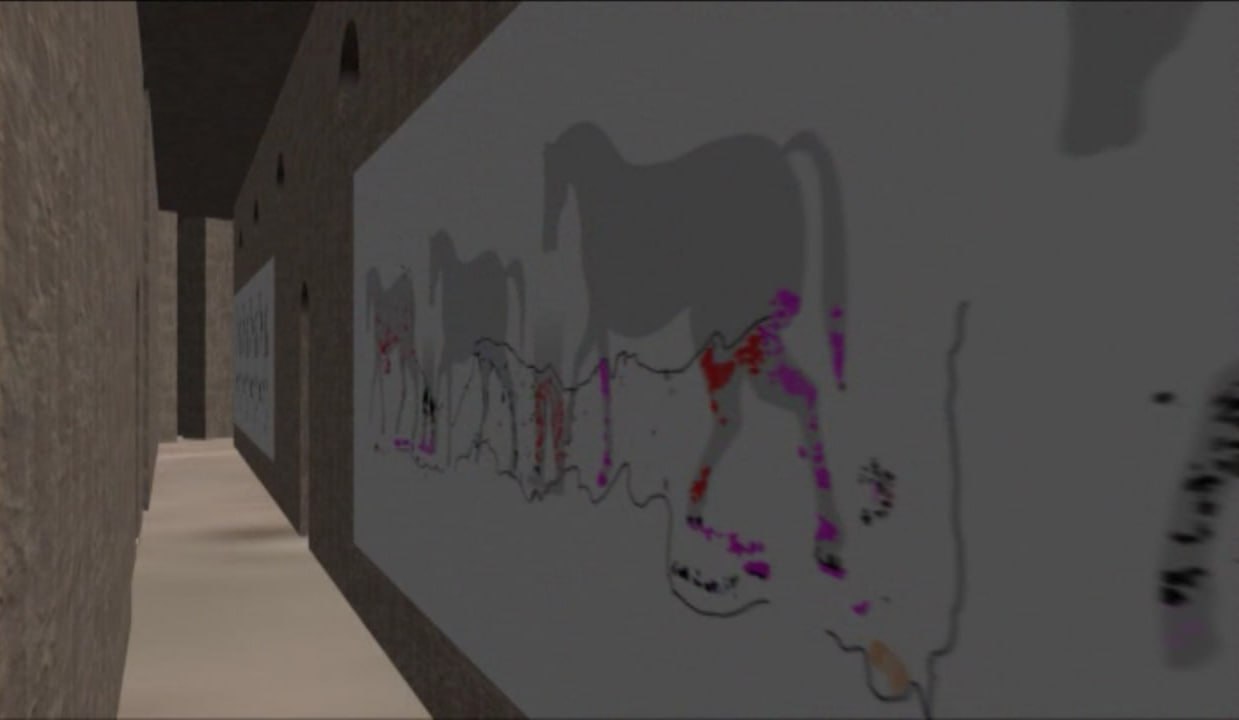 In 2006, a significant number of fragments of multi-colored portrait images, which were once part of the wall decorations, were discovered in the northern section of the corridor amidst rubble and layers. Archaeologists have designated this area as a portrait gallery.
In 2006, a significant number of fragments of multi-colored portrait images, which were once part of the wall decorations, were discovered in the northern section of the corridor amidst rubble and layers. Archaeologists have designated this area as a portrait gallery.
The entire surface of the eastern wall is decorated with stylized portraits crafted according to a unified canon: the torso is depicted frontally, while the head is shown in profile, facing either left or right.
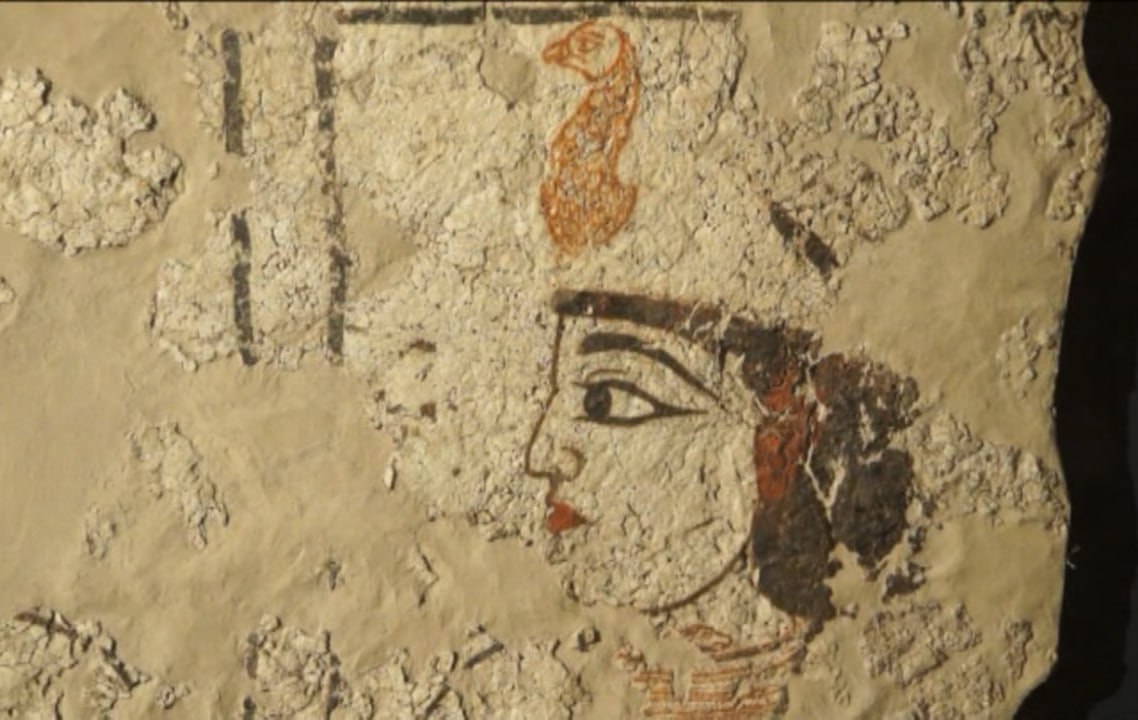 Currently, the collection contains 54 fragments of painting. Of these, 10 figures are endowed with attributes of royal power in the form of a crown and a multi-turned necklace. Meanwhile, 44 figures are without headdress. And only one portrait is made in full height, which indicates the highest status of this person. Perhaps this person was the founder of the dynasty.
Currently, the collection contains 54 fragments of painting. Of these, 10 figures are endowed with attributes of royal power in the form of a crown and a multi-turned necklace. Meanwhile, 44 figures are without headdress. And only one portrait is made in full height, which indicates the highest status of this person. Perhaps this person was the founder of the dynasty.
Inside the building there is a red altar, where religious rituals were held. Fragments of furniture made of ivory, as well as pieces of pottery and clay sculptures were found here.
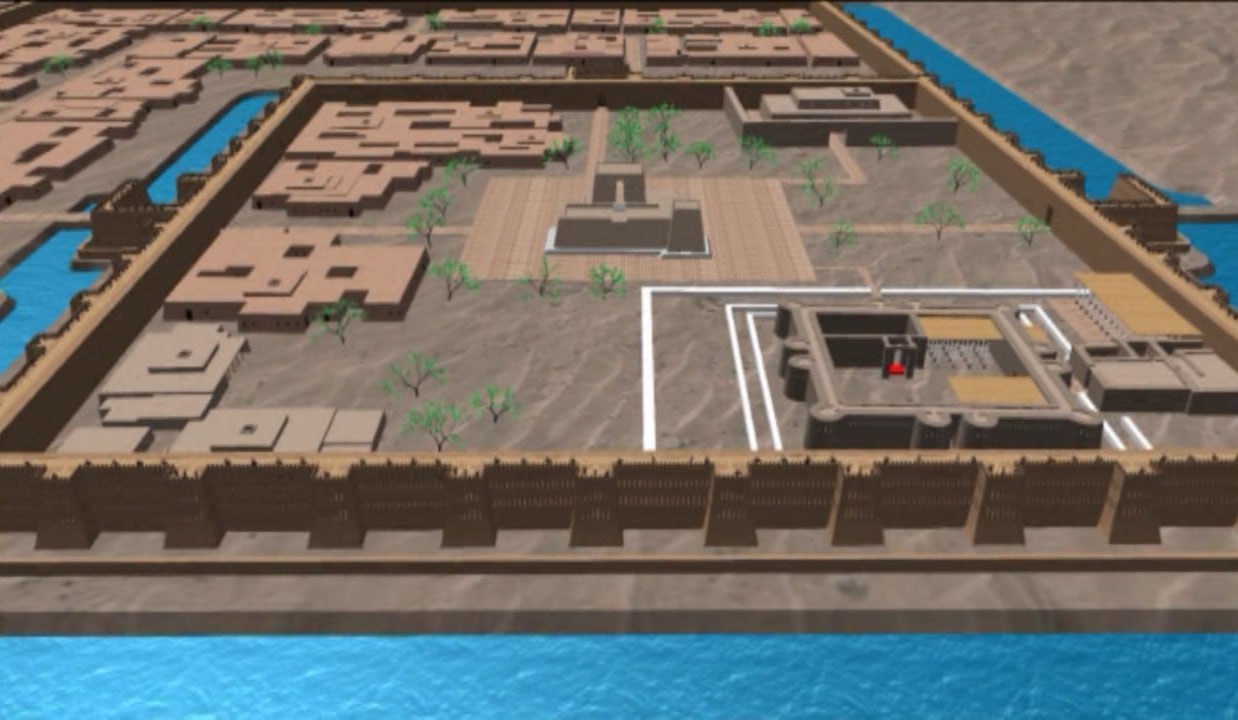
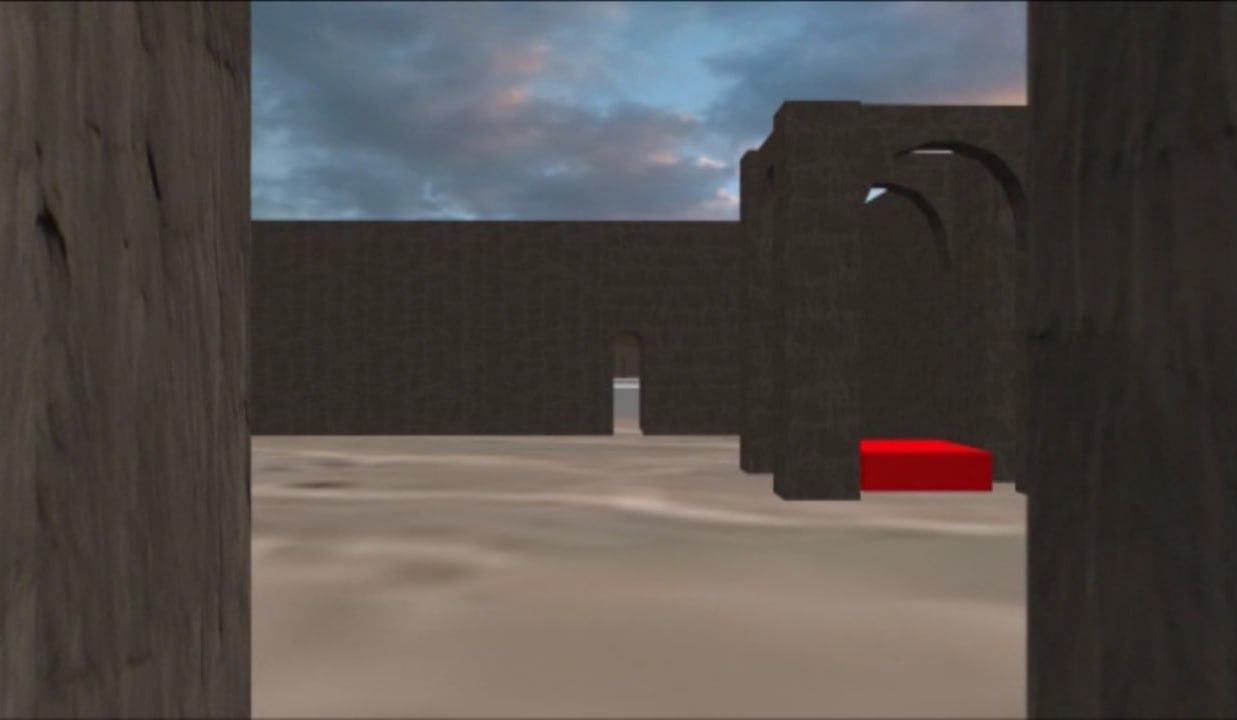 Near the cult ceremonial complex, stone column bases were discovered. Professor V.N. Yagodin suggested that the columns were part of the Hall of a Hundred Columns, which served as a throne room.
Near the cult ceremonial complex, stone column bases were discovered. Professor V.N. Yagodin suggested that the columns were part of the Hall of a Hundred Columns, which served as a throne room.
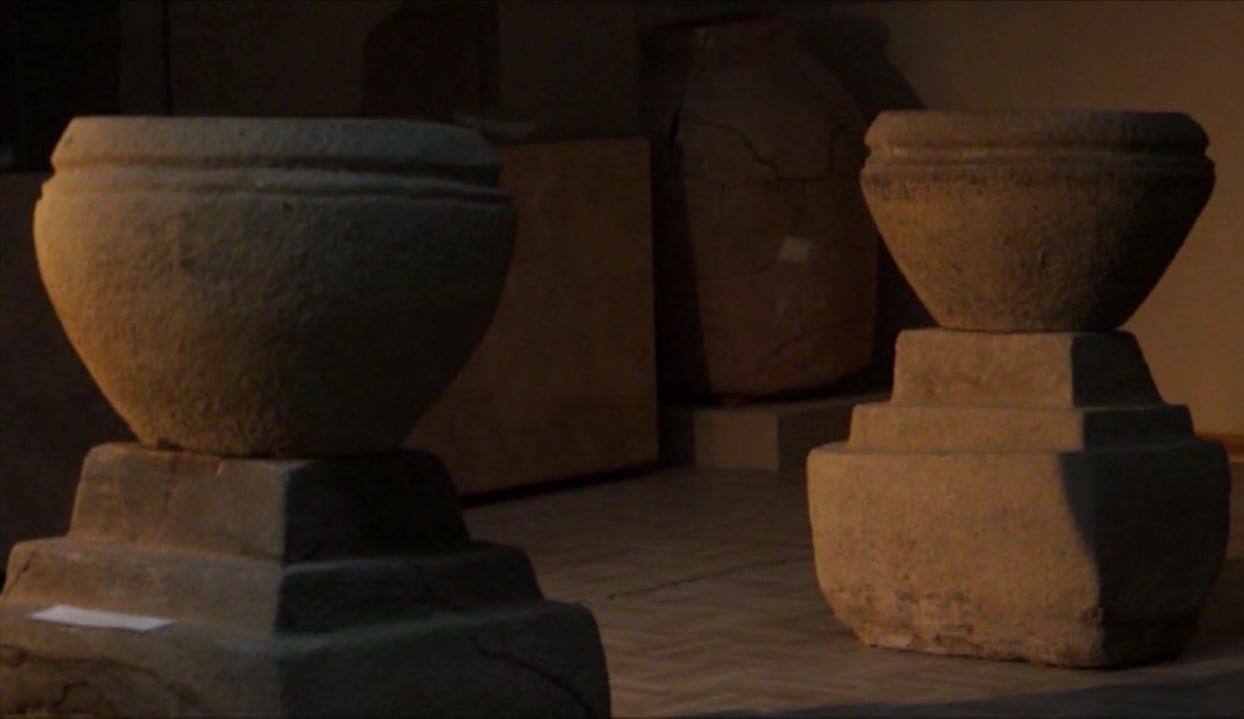
 The grand scale of the settlement and monumental architecture gave scientists reason to believe that it was here that one of the earliest capitals of ancient Khorezm was located. The mysterious city was rich and powerful, but the construction of the defensive wall of the lower city was never completed. Numerous nomadic tribes poured in, bringing wars and leaving behind destroyed cities that were slowly swallowed by the sands.
The grand scale of the settlement and monumental architecture gave scientists reason to believe that it was here that one of the earliest capitals of ancient Khorezm was located. The mysterious city was rich and powerful, but the construction of the defensive wall of the lower city was never completed. Numerous nomadic tribes poured in, bringing wars and leaving behind destroyed cities that were slowly swallowed by the sands.
